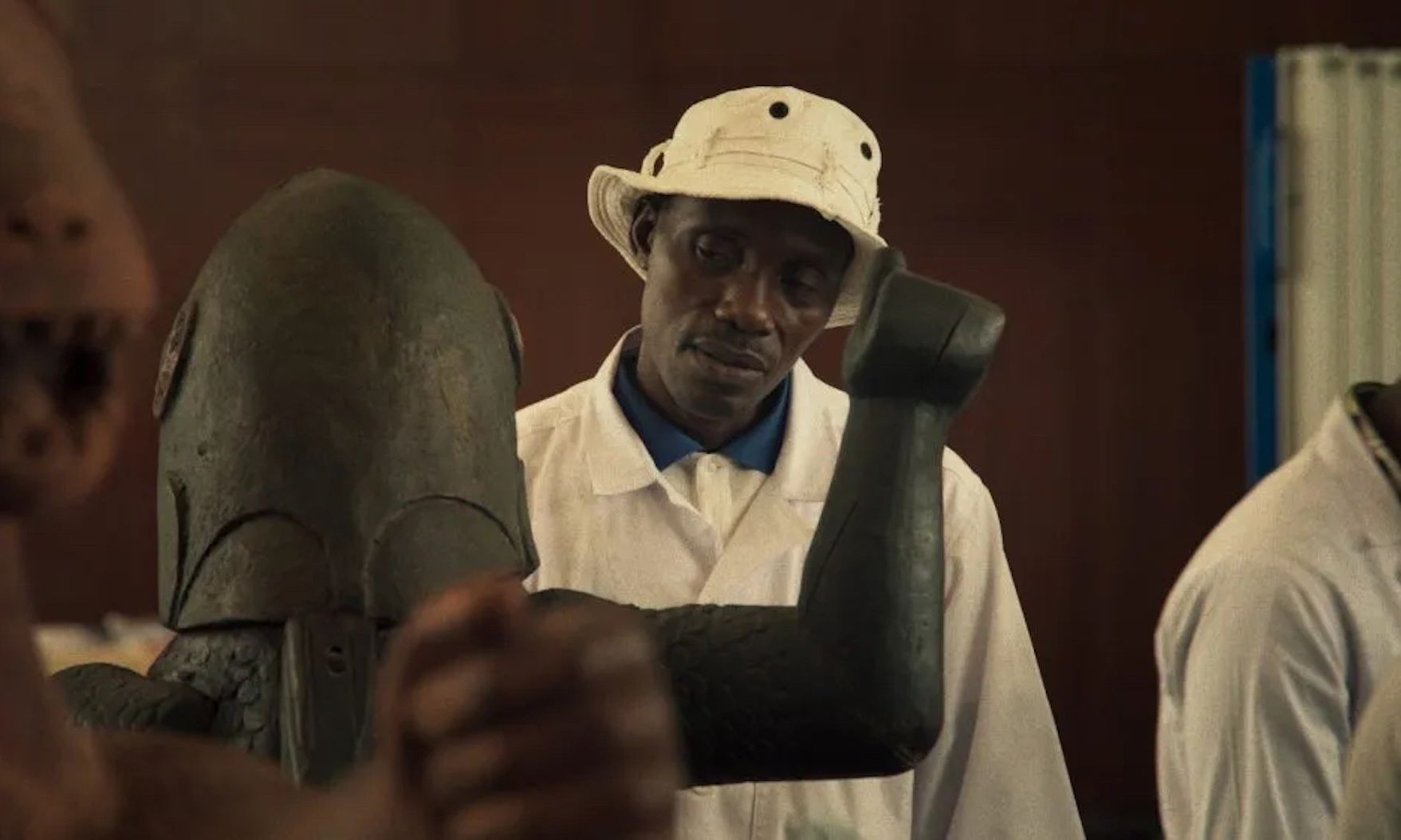A scene from Mati Diop's film Dahomey Courtesy Les Films du Losange
Dahomey, a new documentary by the French Senegalese director Mati Diop that won the Golden Bear at the Berlin International Film Festival last month, begins with an event outside of Africa. In 2021, president Emmanuel Macron of France made good on his promise to send some of the works taken out of Africa—out of Dahomey, to be exact—back to the country now called Benin, from which French forces removed them more than a century ago.
Since there are at least 7,000 works from the ancient kingdom of Dahomey still in French museums, and probably many more in French private collections that are legally out of reach of any possible restitution claims, calling Macron’s return of 26 objects an understatement is itself an understatement. “The purpose of this adventure is not for France to get rid of every piece of the heritage of others,” Macron said. “That would be a terrible vision.”
Diop’s film opens with that gesture from France, which many Beninois saw as begrudging, and takes viewers through an official homecoming of objects, moving from the crepuscular son-et-lumière halls of the Quai Branly as those objects arrive in Benin and local dignitaries gather to greet them. There is a ceremonial air to it all as locals welcome objects that haven’t been in their land since long before Benin became independent (then as Dahomey) in 1960—since long before anyone in the film was even born.
Repatriating more of those artefacts is another challenge, but Diop shows us that living and being defined by long-absent objects is challenging enough. As almost always happens with art documentaries trying to make a point—like Statues Also Die (1953) by by Alain Resnais, Chris Marker and Ghislain Cloquet—the camera doesn’t stay long enough on objects that most of us probably don’t know. An auditorium full of students impatient with the French initiative eventually raises the volume.
Diop has an eye for elegance and superb cinematographers who can help her achieve that. We saw it in Atlantics (2019), a rumination on migration and grief—improbably gorgeous, given its bleak subject—set in the near future in Dakar. In Dahomey, we watch objects being packed for the journey to Africa and unpacked with great care—scenes with a measured processional feel that seem like a burnished version of the boilerplate museum exhibition video, with more than a hint of luggage as upmarket as Chanel.
One statue, of Behanzin, Dahomey’s king in 1890, even talks ominously from its wooden crate. We’ve heard inanimate figures speak in movies before, just not in this kind of film. And in such a meditative documentary, without much-needed conventional exposition, we can expect some of the audience to leave the film confused over whether the 26 objects from Dahomey are the same objects as the Benin bronzes, which were pillaged by English troops in 1897 from a kingdom in what is now Nigeria, which borders Benin on the East.
A scene from Mati Diop's film Dahomey Courtesy Les Films du Losange
Yet the film’s second act, clamorous in a crowded auditorium, shows us a new generation that senses a betrayal by the French in the limited number of objects returned. This is the generation that will live with the works of its own culture, complete with that culture’s imperfections then and now. Staged by Diop, the scene still brings life to a film that can feel far too august. It also makes clear that the objects from the storerooms of the Quai Branly will have an audience.
Dahomey seems likely to reach a large public audience, too, especially if it wins another big prize. At just 68 minutes, the film is as streamable as anything out there, even in French and in Fon, Benin’s most widely spoken African language.
Diop’s film and its reception are proof that colonial plunder and restitution are in the zeitgeist. An additional case: the bloody German melodrama Der Vermessene Mensch (Measures of Men), about the extermination campaigns against Africans in Namibia (1904-08) and the preparation of human remains for sale to institutions in Germany (still held in those institutions). The gruesome film, directed by Lars Kraume, premiered at the Berlin International Film Festival last year.

